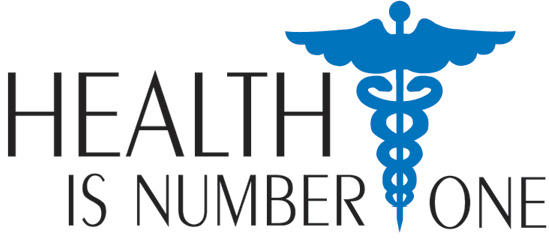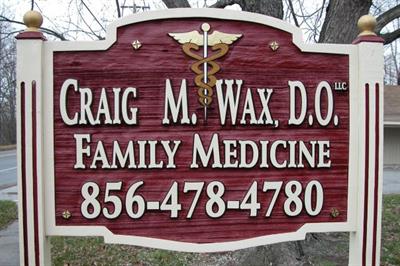Health Library ~ Family Medicine in Mullica Hill, NJAll Material copyright Craig M. Wax, DO unless otherwise denoted. TANNING
True or false? A good tan indicates good health. Although many people think otherwise, a good tan does not equal good health. In reality, tanning is the skin's way of telling you that it has been damaged. The American Osteopathic College of Dermatology endorses the position of the American Cancer Society and the U.S. Department of Health and Human Services on the topic of tanning. And that position is that tanning, whether outdoors or indoors, poses a danger to one's health. Invisible Rays Can Hurt You There are two types of ultraviolet (UV) radiation that cause skin damage. Regardless of whether they are emitted from the sun, tanning beds or sun lamps, UV rays result in premature aging of the skin. There is no "safe" place from which to get UV light for tanning. * UVA-recognized as a deeper, penetrating radiation and possibly linked closely to the development of melanoma. * UVB-associated with sunburn. "People can experience acute and chronic effects of tanning. The most obvious is sunburn. But, people also can develop photosensitivity, a condition in which the skin becomes extremely sensitive to light," warns Michael Scott, D.O., an osteopathic dermatologist in Washington and a past president of the American Osteopathic College of Dermatology. Here's another quick quiz. True or false? Whether tanning from natural sunlight or artificial light, the negative effects remain the same. Tanning is only for cosmetic purposes, and the negative effects are not worth whatever benefits you think you will get from darkening your skin. This vitamin allows the body to absorb calcium and phosphorous. The recommended daily amount of vitamin D is 400 IUs. However, although sunlight can play a role in vitamin D production, Dr. Scott stresses that the best place to get the vitamin is from food. "Fish liver oils, fatty fish and egg yolks give you the necessary amount of this nutrient," Dr. Scott says. "In addition, milk, margarine and some cereals are fortified with vitamin D." Dr. Scott does admit that sunlight in small amounts can be beneficial. Studies have shown that sun exposure can improve a person's emotional state. Also, small amounts of light exposure have been known to effectively treat some skin disorders, such as psoriasis. Too Much Sun Can Mean Skin Cancer Each year, more than one million cases of skin cancer are diagnosed, making it the most prevalent of all cancers. A significant percentage of skin cancer is due to sun exposure. In fact, 90 percent of all skin cancers occur on parts of the body that are not covered by clothing, leaving these areas exposed to the sun's dangerous rays. Basal cell carcinoma, squamous cell carcinoma and melanoma are the three most common types of skin cancer. Basal cell carcinoma starts out as a pink, red or white shiny bump, or it may be a red patch that develops on the nose, lips, ears or face. This type of cancer may appear to be a sore that just won't heal. Basal cell carcinoma usually strikes individuals with fair skin tones, and it accounts for about 75 percent of all skin cancers. With squamous cell carcinoma, the affected area looks like a red, scaly patch. Like basal cell carcinoma, this cancer type is more commonly found on light-skinned people. Squamous cell carcinoma usually develops on the face, lips, mouth and the rims of the ears, and it makes up approximately 20 percent of all skin cancers. Melanoma, the most serious form of skin cancer, takes on a mole-like appearance. The "mole" can vary in color from dark brown to black. Melanoma can develop on any part of the body, and it has a tendency to spread. Like other healthcare providers, osteopathic physicians suggest following the "ABCD" rules when looking for signs of melanoma, which are as follows: * Asymmetry-Do both sides of the "mole" match up? If it isn't even, it is asymmetrical. This could be abad sign. * Border-Is there a defined border to the "mole" or are the edges ragged? Irregular edges are more likely to indicate melanoma. * Color-Is the "mole" even in color or are variations present? Are there shades of red, blue or white? The presence of multiple colors can signal problems. * Diameter-Is the "mole" bigger than the size of a pencil eraser? The larger it is and the faster it has grown, the more you should be concerned. If any uncertainty still exists after asking and answering these questions, make an appointment with a physician. When dealing with any type of skin cancers, early detection is key. The earlier the skin cancer is identified, the better the chances are for curing it. Other Things to Look For He reminds you to look at the front and back of your body, your forearms and upper arms, your palms, and your feet-including the soles and the spaces between the toes. Who Is At Risk? * Have fair skin; blond, red or light brown hair; and blue, green or gray eyes * Have freckles * Burn before tanning, burn easily or do not tan easily * Spend a lot of time outdoors * Have been previously treated for skin cancer * Have a family history of skin cancer Protecting Yourself From the Sun * Avoid the peak sunlight hours between 10 a.m. to 4 p.m. During this period, two-thirds of ultraviolet radiation from the sun penetrates the Earth's atmosphere, making it more likely that your skin will be damaged. * Wear a hat with a brim and wear clothing that doesn't leave too much of your skin exposed. * Wear sunglasses that provide 100 percent protection from UV rays. * Apply sunscreen, with a minimum SPF of 15, on all exposed skin areas (remember to get the rims of your ears and your lips, too). Do this at least one hour before heading outdoors. Re-apply sunscreen often. * Get out of the sun before your skin turns red. * Take the same precautions on cloudy days. Despite knowing the consequences of tanning, many people still insist on "catching some rays." For these sun worshippers, Dr. Scott's most vital piece of advice is that people should tan gradually. "Exposing one's self to the sun's rays gradually allows the outer layers of the skin to thicken. That will provide a little more protection from the sun," he explains. Choosing an SPF The SPF, or the sun protection factor of a sunscreen, indicates the length of time people can stay out in the sun without burning. In order to determine which SPF you require, you need to know how many minutes you can stay in the sun before you burn without using sunscreen. You divide this number into the number of minutes you want to stay in the sun. That number will be the minimum SPF you should use. For instance, let's say you can stay in the sun for 20 minutes without burning, and you want to be in the sun for four hours (240 minutes). You simply divide 240 by 20, which equals 12. That means you would need to use a sunscreen with at least an SPF of 12. While tanning may enhance your appearance in the short run, Dr. Scott urges you to remember that in the long run, it will have damaging effects on your appearance and your health. Not only does tanning increase the likelihood of premature wrinkling, but most importantly, it poses potentially serious health risks. As physicians who emphasize prevention and wellness, D.O.s strongly support the U.S. Surgeon General's Healthy People 2010 initiative in the quest to improve quality of life and increase the number of years of healthy life. For more information on osteopathic medicine or to locate a D.O. in your area, call the AOA at 1.800.621.1773, ext. 8252, or visit the AOA's Web site at www.aoa-net.org. Did You Know. . . ? * People may receive up to 80 percent of their life's total exposure to UV light by age 18. * Every year, more than one million cases of skin cancer are diagnosed. * UV rays are responsible for more than 90 percent of all skin cancers. * Malignant melanoma accounts for 75 percent of all skin cancer deaths. * Regular skin self-exams could save an estimated 4,500 lives each year. * UV radiation exposure increases approximately 5 percent for every 1,000 feet you are above sea level. * Experts recommend that people use products with an SPF of at least
15.
Sources: American Osteopathic Association and
You can contact the following organizations for additional information: American Osteopathic College of Dermatology
American Academy of Dermatology
American Cancer Society
|
|





